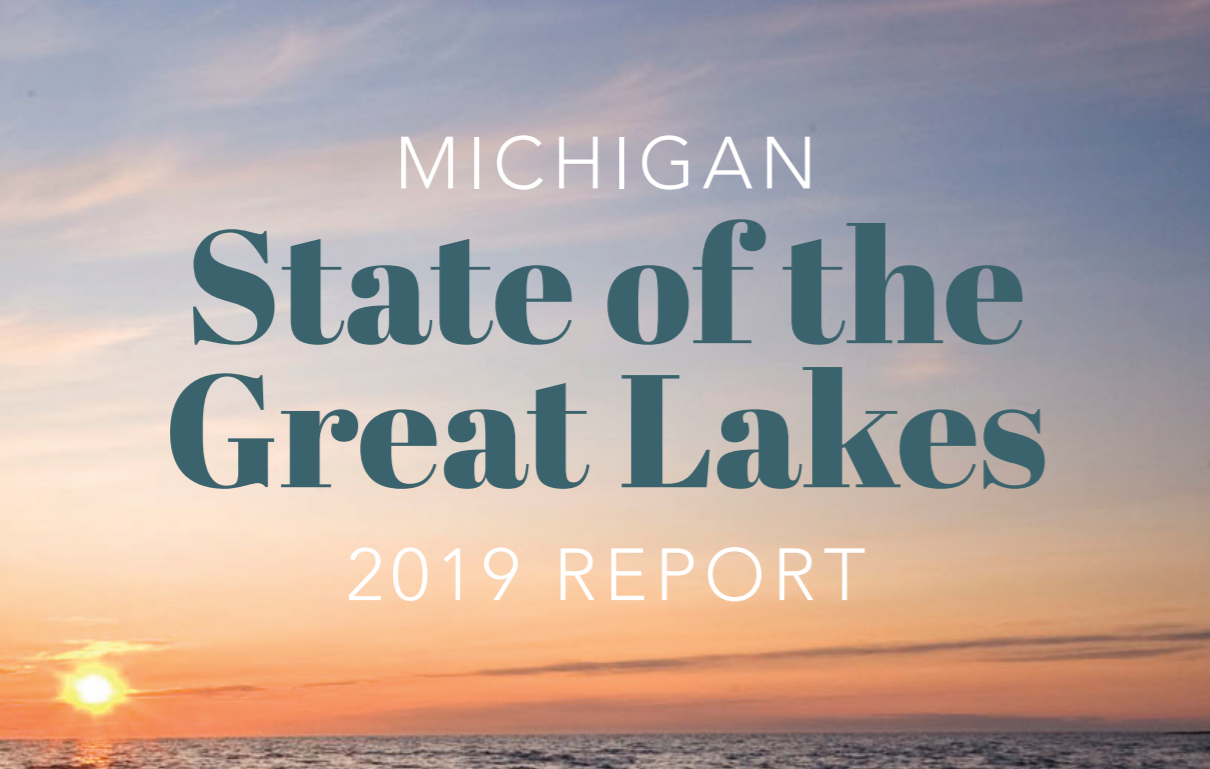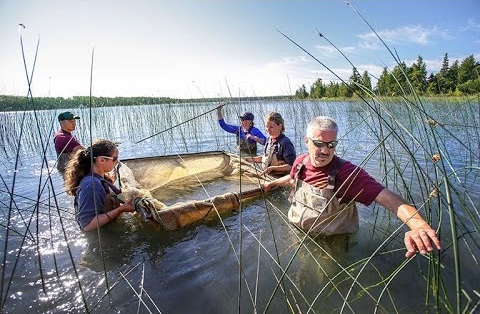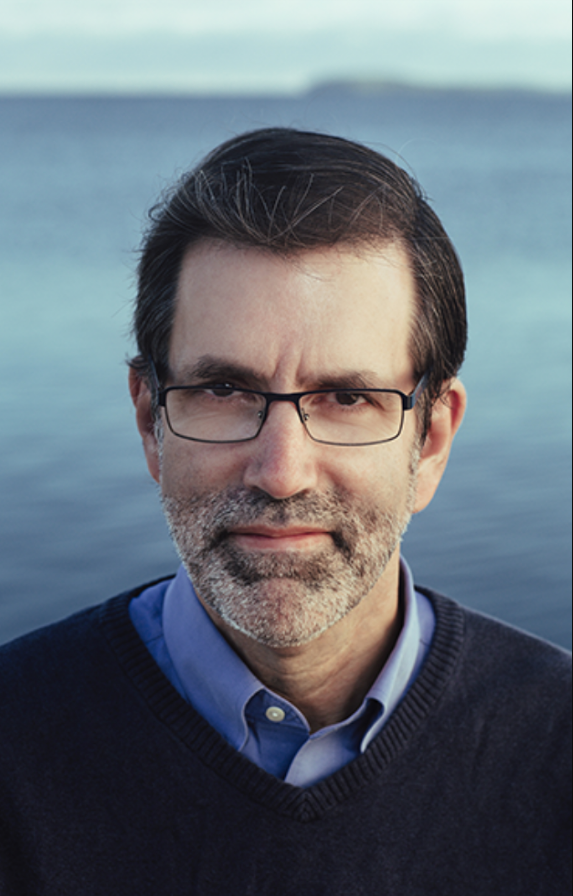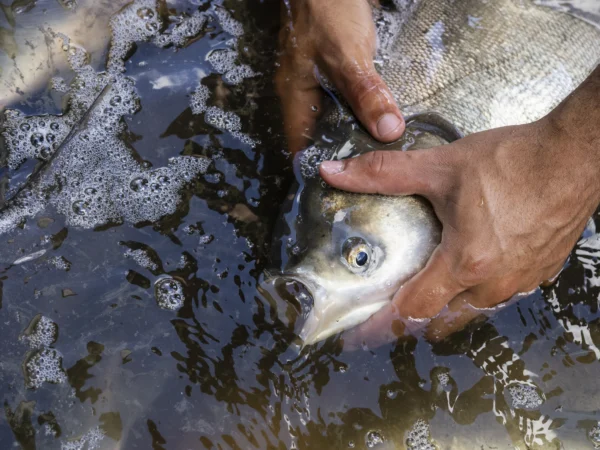
In her first regional appearance after taking office in January 2019, Michigan Gov. Gretchen Whitmer made it clear that Michigan would take a leadership role on Great Lakes issues.
“Michigan has to lead on Great Lakes issues,” Whitmer told Great Lakes Now after speaking to fellow Great Lakes governors and Canadian premiers and the broader Great Lakes community in Milwaukee.
“The Great Lakes are at the core of who Michigan is,” she said.
Fast forward to the release of her first State of the Great Lakes report last week, which encompasses 2019, and in it she positions Michigan as a regional and national leader on drinking water issues.
Introducing the report, Whitmer said Michigan has “led the way” for the Great Lakes region, citing the launch of a Great Lakes 2020 agenda for presidential candidates.
On PFAS, per- and polyfluoroalkyl substances, one of the most vexing water quality issues that plague the country, Whitmer said “Michigan is truly a leader in the region” and the state’s coordinated approach to PFAS “has been adopted across the country.”
Following Whitmer in the report, Department of Environment, Great Lakes and Energy director Liesl Clark cited the creation of public advocacy positions for clean water and environmental justice as 2019 accomplishments.
“These new initiatives support our mission of protecting Michigan’s environment and public health by managing air, water, land, and energy resources,” Clark said.
The State of the Great Lakes report is produced by EGLE’s Office of the Great Lakes.
Whitmer made a passing reference to algal blooms in her statement and they were not mentioned by Clark. Neither mentioned the aged Enbridge Line 5 pipeline under the Straits of Mackinac. Both are long-standing and unresolved threats to Michigan and the Great Lakes region.
Activists, scientists not convinced by report
The report emphasized Michigan’s collaboration in the region in dealing with harmful algal blooms.
The report points to Whitmer’s 2019 executive directive “that reaffirmed the state’s commitment under the 2016 Western Basin of Lake Erie Collaborative Agreement to reduce nutrient inputs by 40 percent by 2025 to combat HABs.”
That goal was established to set expectations in addressing nutrient inputs to the western portion of the lake, which exacerbate the harmful algal blooms.

Harmful algal bloom in western Lake Erie (Great Lakes Now Episode 1013)
But not everyone’s convinced on the extent of Michigan’s role in preventing algal blooms.
“Unfortunately, Michigan has done nothing to set drinking water or recreational surface water quality standards for either cyanobacteria or the dangerous toxins they produce,” said Pam Taylor, commenting on the State of the Great Lakes report.
Taylor is the research coordinator for Environmentally Concerned Citizens of South Central Michigan, a nonprofit watchdog group that focuses on water quality based on output from concentrated animal feeding operations, commonly known as CAFOs.
Harmful algal blooms are getting worse all over the state, according to Taylor, who said, “Still, Michigan refuses to take action to protect all of us who use and enjoy water from both Michigan’s inland and Great lakes.”
Specific to Michigan’s Lake Erie plan, Taylor said it’s too reliant on voluntary use of best practices under the Michigan Agriculture Environmental Assurance Plan, which has no scientific accountability and no water quality data to demonstrate effectiveness.

Professor Don Uzarski (Courtesy of Central Michigan University)
The absence of data in the annual report is noticeable, according to Central Michigan University professor Don Uzarski. Contrary to the report’s title, “the document does not address the state of the Great Lakes,” Uzarski said.
“Nowhere in the document will you see data-driven metrics that measure the condition of the ecosystem,” said Uzarski, who directs the university’s Institute for Great Lakes Research.
Uzarski manages a region-wide wetland monitoring program and submits the data the program collects to the U.S. Environmental Protection Agency as well as Environment and Climate Change Canada, who jointly produce a State of the Great Lakes report that uses metrics to measure improvement or decline in the ecosystem.
Missing Line 5
The Enbridge Line 5 pipeline is conspicuous by its absence in the report since dealing with it was a signature Whitmer campaign pledge, perhaps second after fixing the roads.
As governor, Whitmer has repeatedly said that we need to “get that pipeline out of the water.”
EGLE spokesperson Nick Assendelft said in an email that “at the time we were developing the report it was status quo for Line 5, with legal action by the Governor’s and Attorney General’s offices pending.”
Since there had been no significant change in the status of the pipeline, “it didn’t rise to a topic we thought needed to be included in the report,” Assendelft said.
Michigan and Enbridge are currently involved in legal disputes over the existing Line 5 and its proposed pipeline-in-a-tunnel replacement. Whitmer has described protracted litigation over Line 5 without an alternative to the current aged pipeline as the “worst case scenario” for Michigan.
Report is a showcase, not an evaluation
New to the report in 2019, according to Dave Dempsey, is a section on the Public Trust Doctrine. Dempsey is a senior adviser to the Traverse City not-for-profit For Love of Water.

Dave Dempsey, FLOW Senior Adviser
“The basic premise behind much of the Great Lakes legal protection is the idea that surface water itself is not property of the state, but a public good,” the report says.
That means it’s the state’s responsibility to protect water resources for all, and that principle has been upheld in a number of court cases.
“It’s gratifying to see the report mention the public trust doctrine at some length,” said Dempsey, who expressed “hope the department will put that doctrine to use in its regulations and enforcement to defend the Great Lakes.”
Dempsey, with decades of policy experience in Michigan and on the Great Lakes, explained that the State of the Great Lakes report serves as a showcase for the administration’s Great Lakes work, which follows the practice of previous administrations.
However, echoing Uzarski’s statement, “the report should not be mistaken for a critical evaluation of the state of the Great Lakes,” Dempsey said.
EGLE spokesperson Assendelft defended the report’s format, telling Great Lakes Now that its purpose is to highlight significant work and accomplishments in the past year.
“The report is not necessarily a comprehensive look at every aspect of the Great Lakes or related topics,” Assendelft said.
Among other topics covered in the report are the status of Asian carp and a new Soo Lock.
Michigan continues to work with Illinois to advance an agreement on the Brandon Road Lock, the Army Corps of Engineers’ preferred choke point to stop Asian carp, according to Tammy Newcomb, senior water policy adviser in the Department of Natural Resources.
Earlier this year, Michigan pulled back the $8 million in funding that it had committed to Illinois for the project. To transfer the money to Illinois, the funding will have to be reauthorized.
Work on a new Soo Lock is finally advancing based on $52 million that Michigan appropriated to kick start the project in 2018 and $117 million in federal funds that’s in the works. The work has a targeted completion date of 2027, according to the report.
The entire 26 page report is here.
Read more news on Great Lakes Now:
State of the Lakes: Great Lakes stable, but rollbacks of protection will soon bite
Offshore Decline: Great Lakes fish populations at risk from low nutrient levels
Above Average: Great Lakes water temperatures keep high after record-breaking July
Whitmer: $600M Flint water deal a step toward making amends
Pipeline tunnel supporters, foes clash before Michigan panel
API key not valid. Please pass a valid API key.



